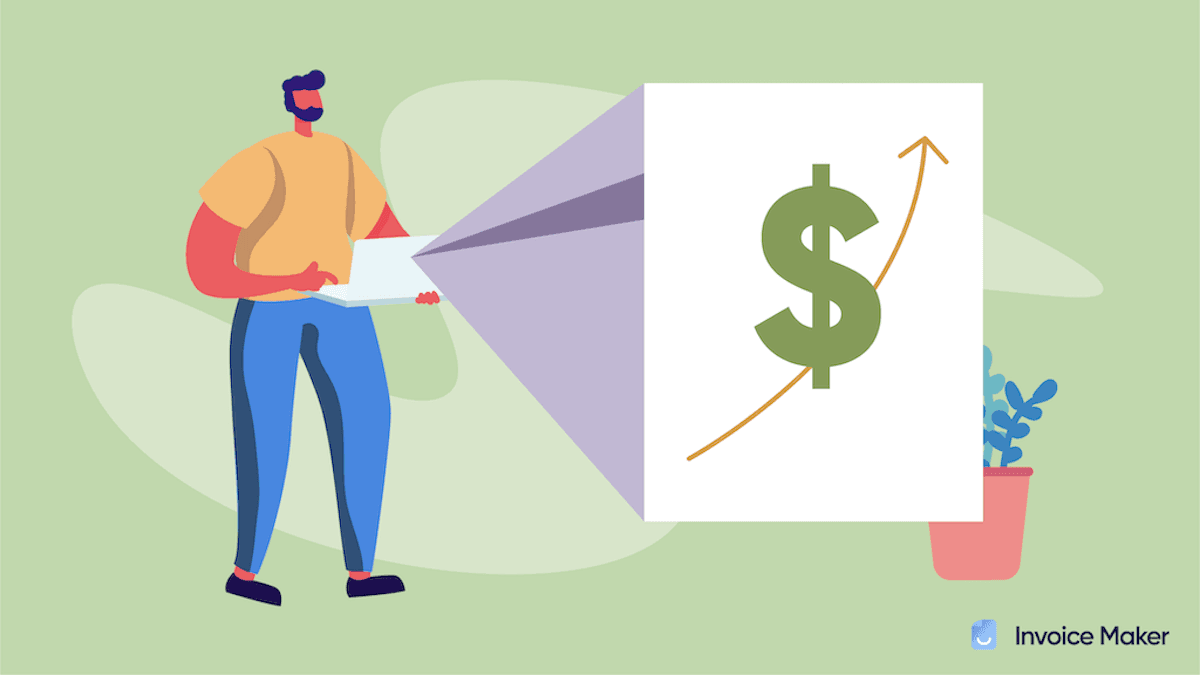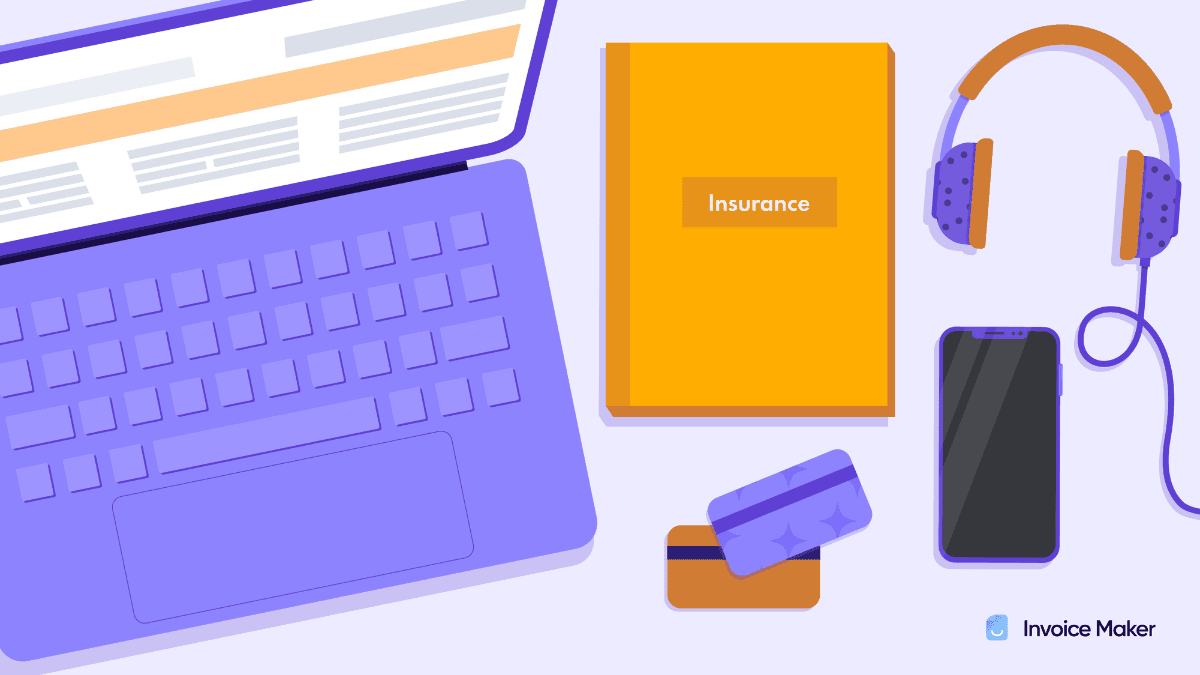How to Set Your Rates as a Freelance Illustrator

Working as a freelance illustrator is one way to turn your artistic abilities into income—and to free yourself from having a boss. Do you love the autonomy and freedom that you earn by working for yourself? Are you up for the challenge of running a small business? If so, freelancing as an illustrator may be great for you.
Make a Free Invoice NowAs with all things work-related, it’s critical to put some hard numbers on the table so that you can make an honest, accurate assessment of your financial options and possibilities. Let’s take a look at just how much money a freelance illustrator makes.
Freelance Illustrator Average Hourly Rates
When it comes to your freelance finances, your two most important numbers are your annual income and your hourly rate. Once you’ve grown your business, you may opt to bill by the project or image, by usage, or on a monthly retainer, but when you start out, you generally charge by the hour.
Your hourly rate is a crucial factor in your business model because it will determine both your annual goal and the kind of volume you need to produce to hit it. Some freelancers prefer to charge premium rates to a few high-end clients—and if you have the portfolio and clout to do so, that’s beneficial (though there is inherent precarity with relying on fewer clients). Other small businesses thrive on a high-volume model, winning a lot of bids and contracts and completing them as efficiently as they’re able.
Hourly rates for freelance illustrators vary widely. One of the exciting things about the field is that once you’re at a certain level (which, to be clear, is a very high level), you have a lot of freedom to set your pricing. The downside to that is that when you start out, you’ll be competing with freelancers who charge an extremely low rate—one that you likely wouldn’t want to accept.
Broadly speaking, the average hourly rate for an illustrator is $21 an hour. Bear in mind that this is an average, and that there are more bargain-priced hourly freelancers out there than there are those with premium pricing. (For example, on Upwork, which tends to rep entry-level freelancers, illustrators bill between $15-$30 hourly.)
If you’re doing the math on what this average hourly rate will net you in a year and feeling glum, take heart—hourly pricing is the standard entry-level model, so many freelancers who charge more (sometimes several or many times more) than $21 an hour aren’t represented by these numbers. The $21 average hourly should serve as a low bar to start from—an amount that is fair to charge as a new freelancer, with the expectation that you’ll raise your rates as you accumulate experience.
Project-Based Illustrator Rates
Once you start charging by the project, you’ll have much more freedom to customize your rate based on the specifics of a given scope of work. With a project-based rate, you can either have an explicit pricing menu that outlines your rates for some common types of work, or you can create a custom bid for each client or project.
If you choose to keep per-project pricing flexible, you’ll want to consider usage (how often your image will be seen or reproduced), market capacity (you’d charge more in NYC than in Peoria, for example), and how desirable the work is to you. Freelance pricing is always a numbers game, and it is absolutely your right as a freelancer to assign pricing based on how much you do or don’t want (or need) the job.
Perhaps you prefer the transparency and consistency of having a “menu of services.” If this is the case, here are some common pricing points for illustration jobs.
Logo design: $200 – $1,000
Your pricing should reflect the contracted terms, including whether you offer options and how many edits are included in your initial price.
Promotional brochures: starting at $1,500
Price varies according to the number of images, complexity, and contracted terms.
Book illustrations: $250-$1,500
While most publishing houses use in-house illustrators, the rise of indie and hybrid-publishing houses means there are more book-length projects going to freelancers.
Images for advertising campaigns: $500 to $10,000
Usage and rights should factor into your pricing. If you’re creating an image for a global brand and signing away all your rights, price accordingly.
Rates By Experience
Illustration is a field where the pay scale is heavily influenced by experience level.
Beginning Illustrator
As an entry-level illustrator, you can expect to start low with pricing, setting your rates between $16 and $24 hourly and working your way up this scale. For this reason, it can work well for some people to freelance on the side of a salary job while building experience and a portfolio before transitioning to full-time freelance work.
Intermediate Illustrator
Once you are mid-career, with five to nine years of experience, average hourly rates are about $25 an hour. That said, by 5 years in, you may be ready to charge by the project, in which case you could charge well above this average figure.
Experienced Illustrator
With 10 or more years under your belt (and the portfolio to prove it), you can begin to command a premium rate. If you continue charging hourly, or if you peg your per-project rates to an hourly figure, at 10 years the average hourly rate is $29, and by 20 years in, it jumps up to $39.
Factors That May Affect Your Rate
Whether you charge by the hour or by the project, your rates will be influenced by factors like the industry you’re illustrating for, your portfolio and depth of experience, the geographic market your client is in, and the type of project you’re working on.
You should always charge more for short turnarounds, multiple options, and revisions beyond your contracted agreement.
Some freelance illustrators charge according to usage, rather than time. This is a nuanced pricing model that pegs your rate to the potential value the work has to the client. Within a usage pricing model, you’d determine your rate based on how your images will be used. The same image would command a higher and lower rate, respectively, if it were to be used for the cover of a product package as opposed to appearing on the third page of a brochure.
Tips for Setting Your Price
Generally speaking, steady business is a sign that your pricing is working well. You want your pricing to reflect your experience level and ability, and to make your work feel “worth your time.” Because that’s as much of an emotional calculation as it is an economic one, you’ll likely have to do some trial and error to get your pricing dialed in.
When you do a job for a new client, you can either tell them your rate or ask what their budget is. If you feel nervous about coming in too high or too low, asking for their budget and then negotiating from there is a solid tactic.
How to Know If You’re Pricing Too Low
If your clients always ping you back immediately to say, “Sounds great!” when you give them a quote, that’s a good indicator that you may be leaving money on the table. If you have more work than you can handle, that’s another sign that it might be a good time to initiate a shift toward a lower-volume and higher-priced model.
How to Know If You’re Pricing Too High
Freelance pricing is a balancing act between valuing your time and talents and retaining your clients—so if you don’t have enough work despite reasonable efforts at getting it, if you reliably get pushback on pricing, or if you’re losing clients left and right despite quality work, it might be time to cap or reduce your price points.
How to Negotiate With a Client
It can feel dicey to raise your rates with an existing client—but as a freelancer, you are your only financial advocate.
When to Increase Your Rate
It is considered industry standard to increase your rate as you gain experience and build your portfolio. Raising your rates at a scheduled interval is a tactic that will allow you to keep up with inflation, continue to invest in technology and professional development, and increase your annual income over time commensurate with your growing value. It is simple to tell your clients upfront (or to note on your contracts) that you raise your rates every year. An annual increase of 15% is reasonable as you’re building your business, with 5% to 10% annual increases once you’re established.
Making a Living as a Freelance Illustrator
Freelance illustrators are all over the map when it comes to income, with some just scraping by and others commanding an enviable annual “salary.” Your ability to earn as a freelance illustrator will be determined by a mixture of talent, discipline, business acumen, connections, and pure luck.


